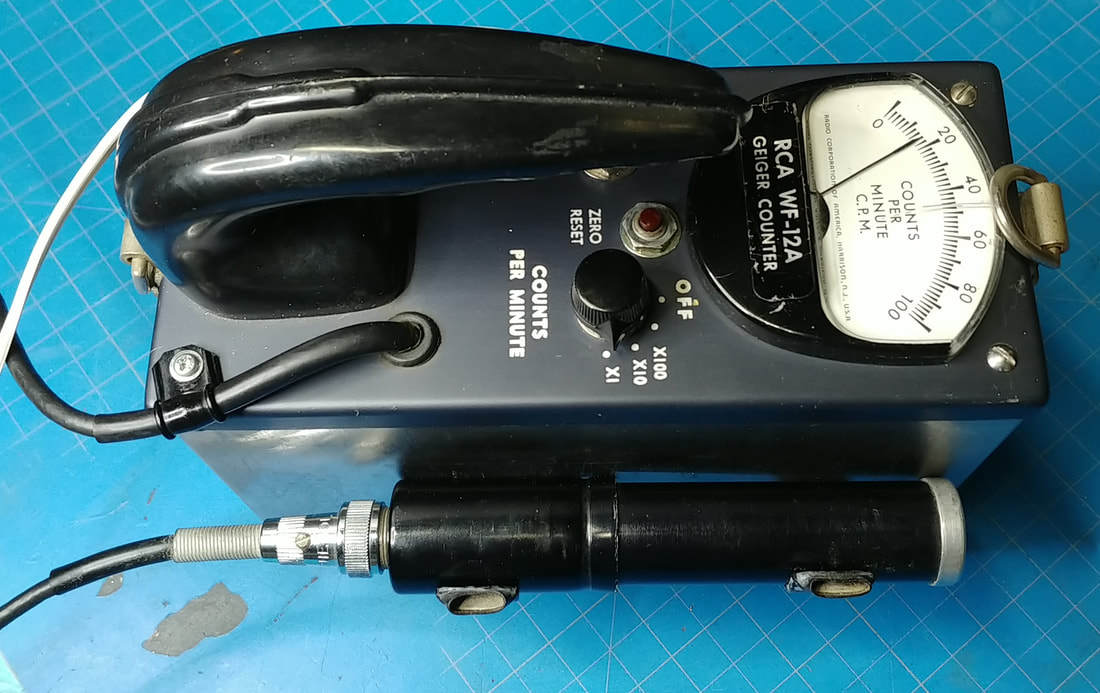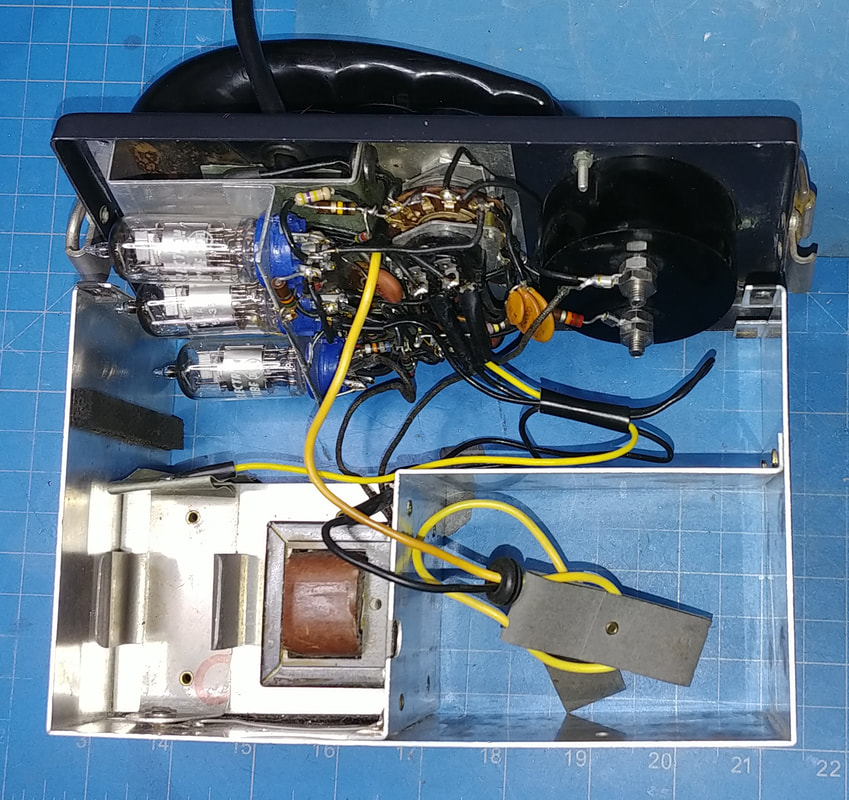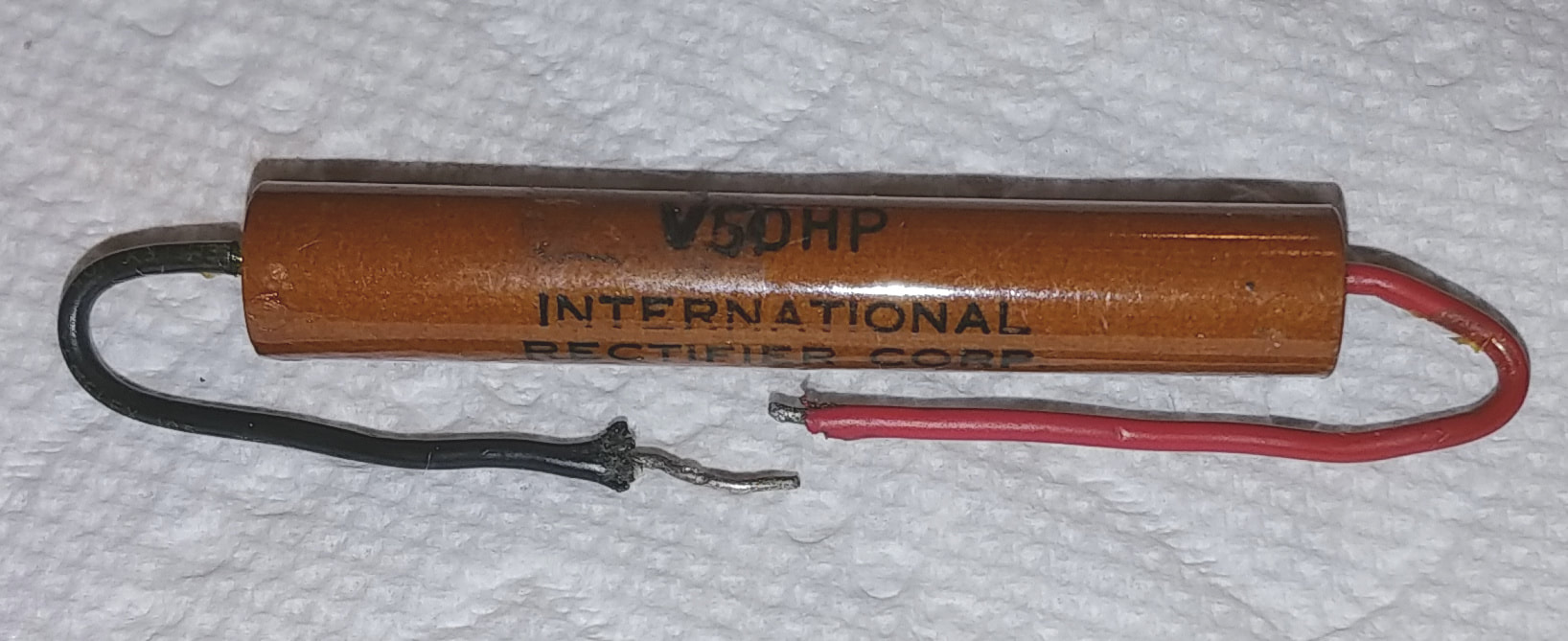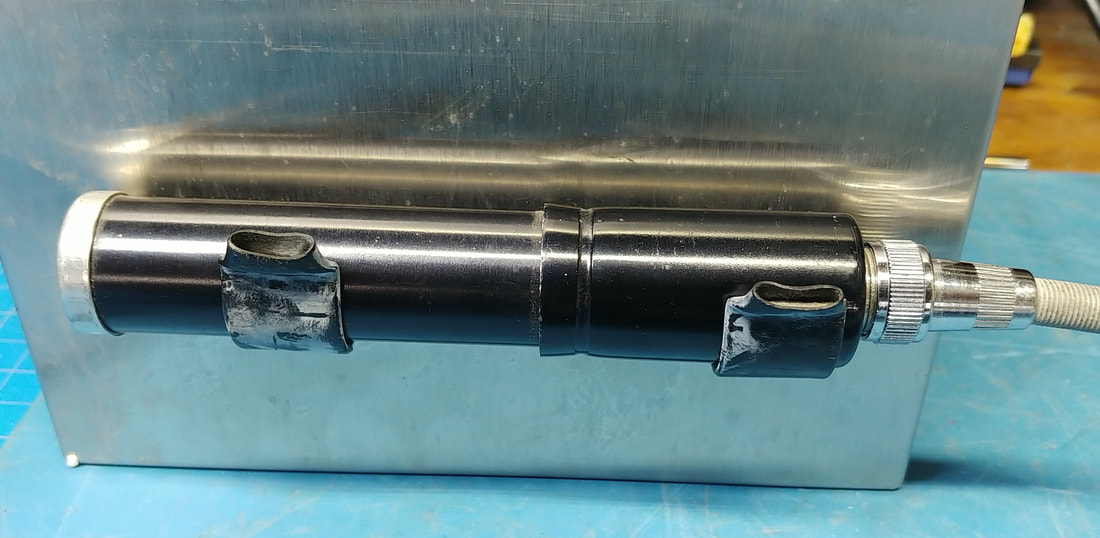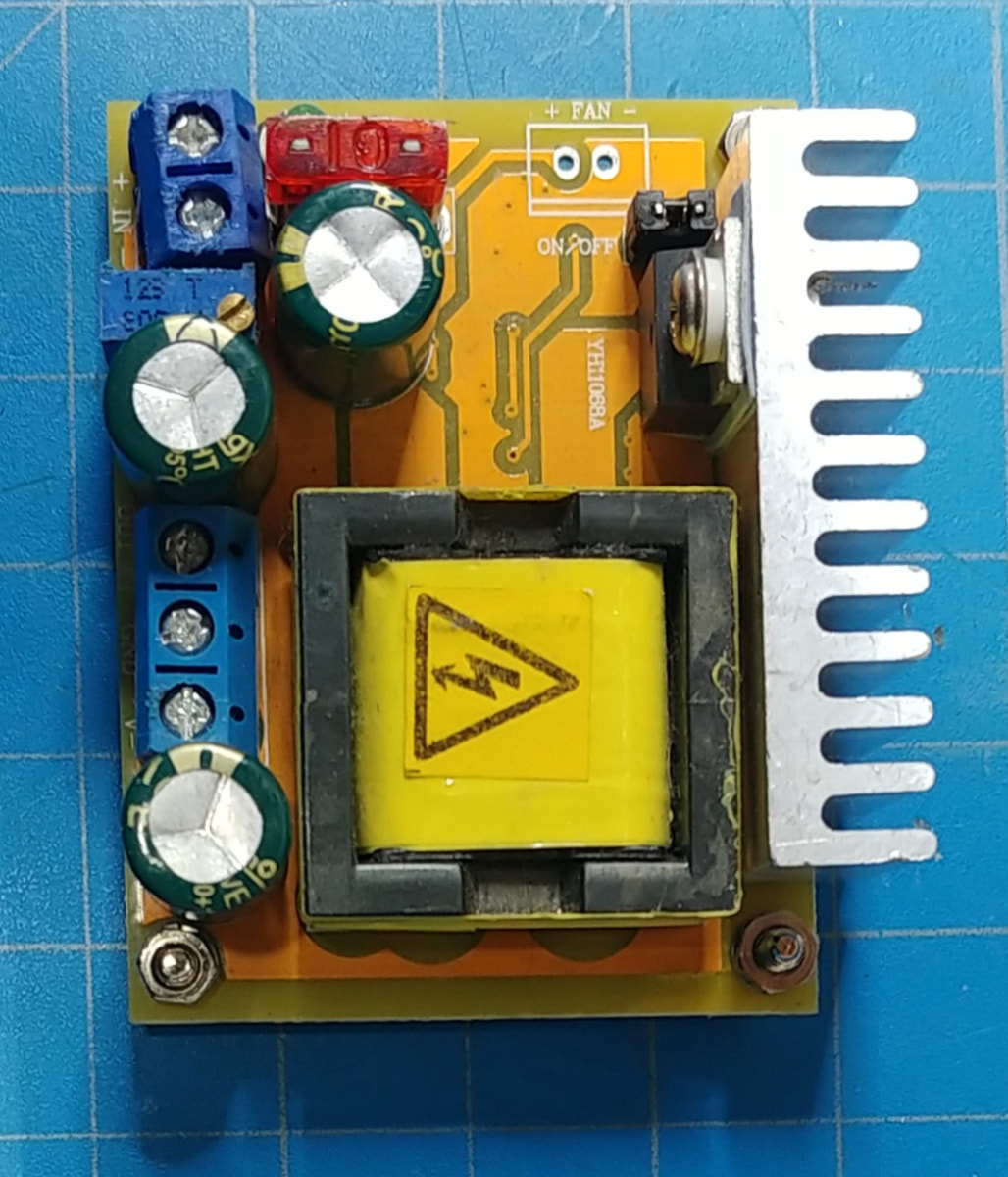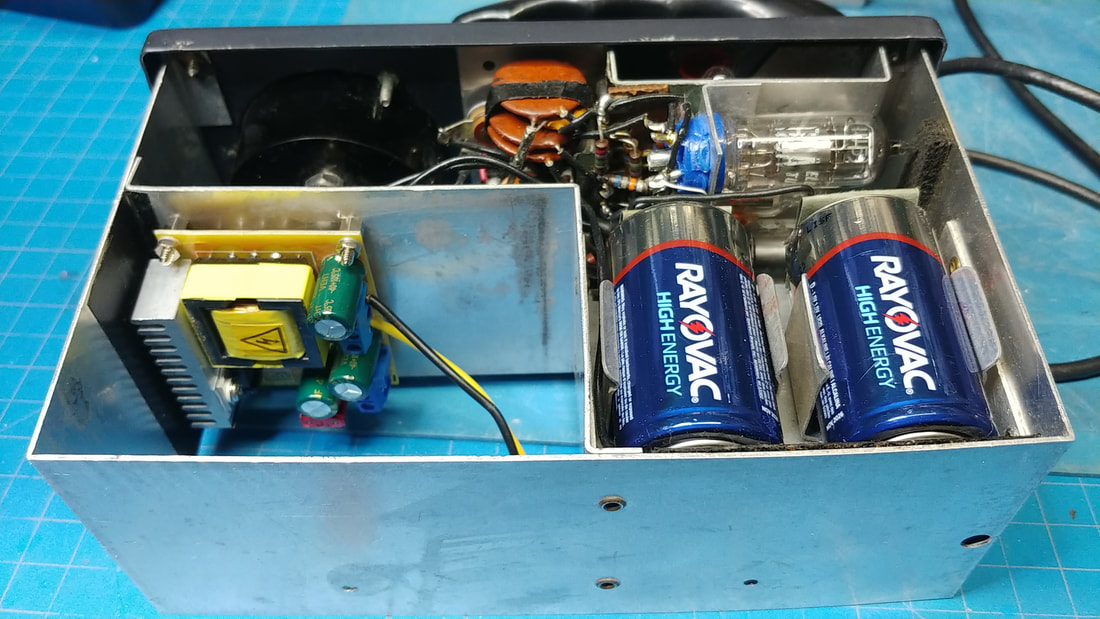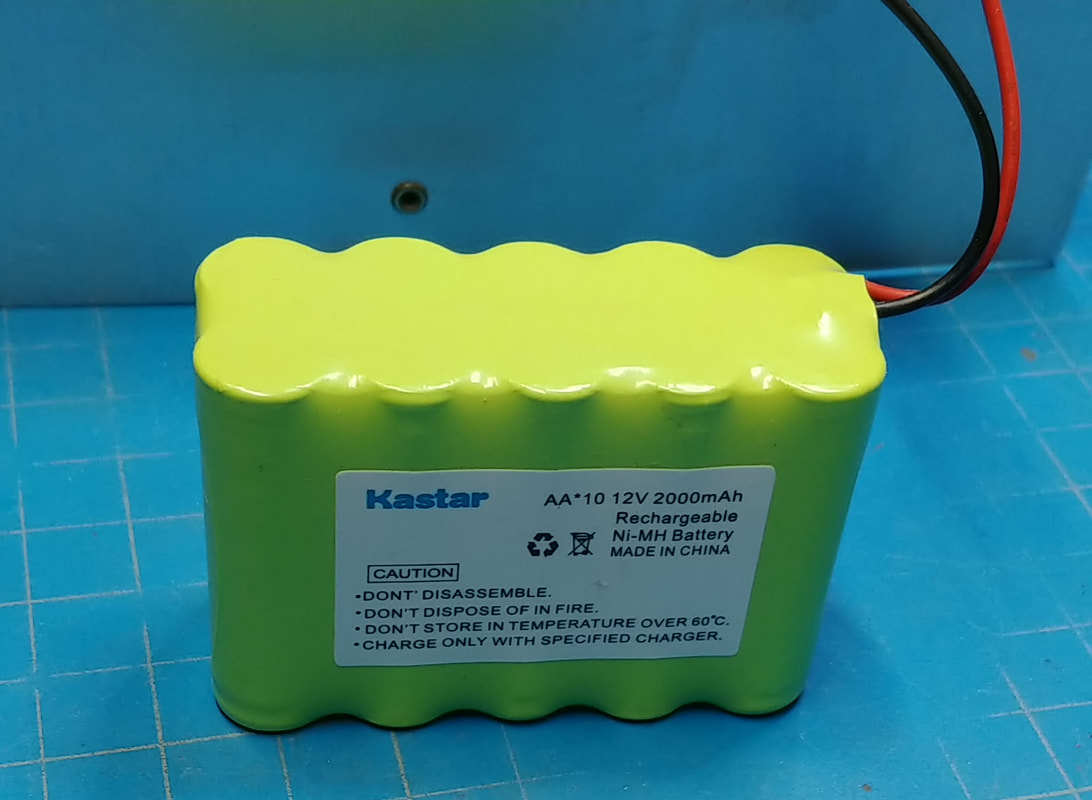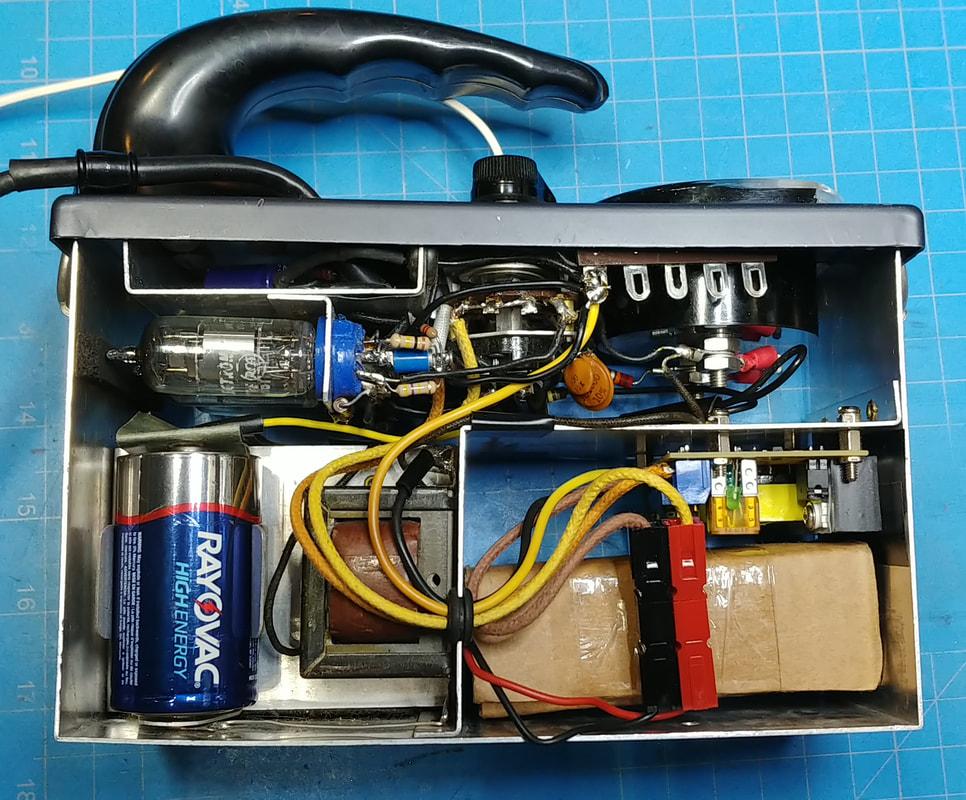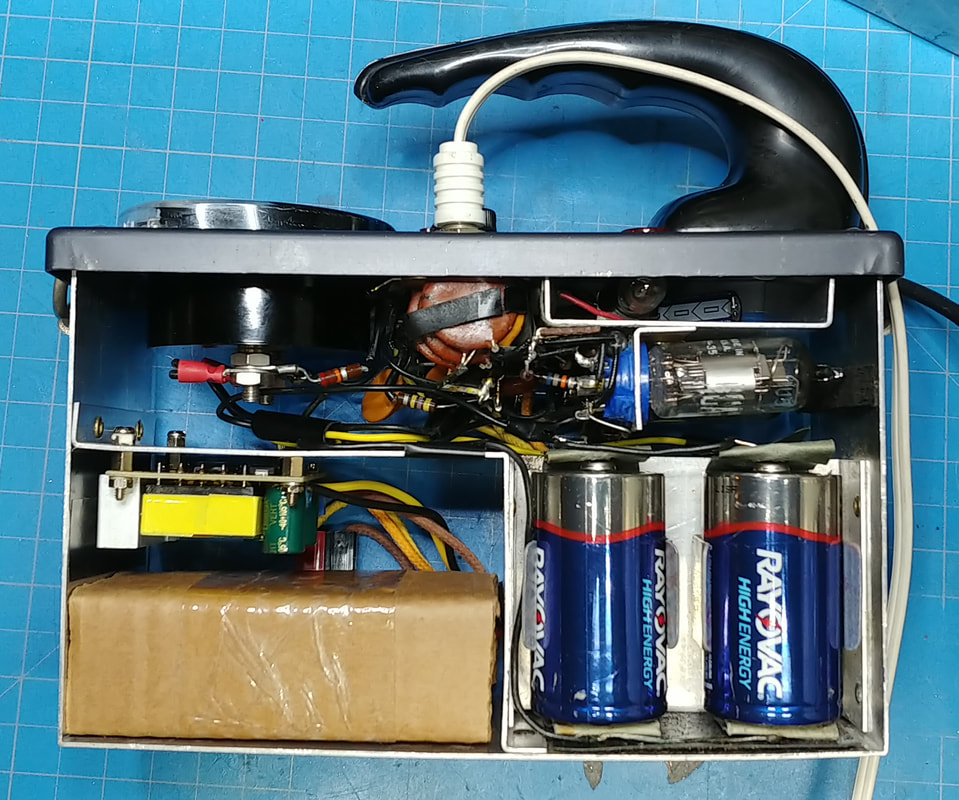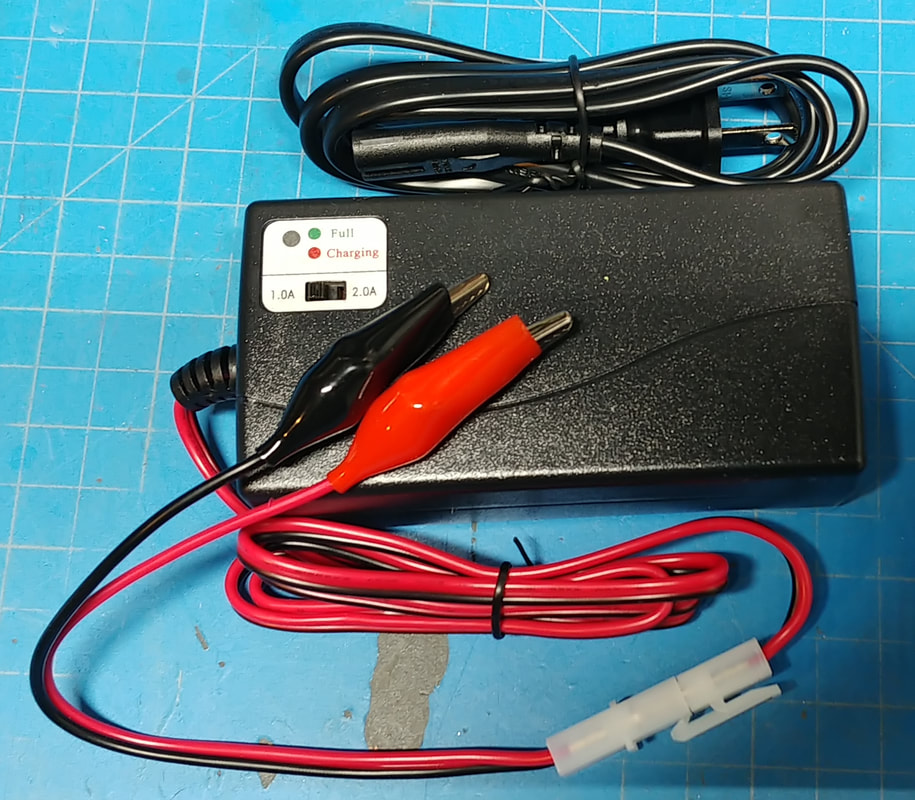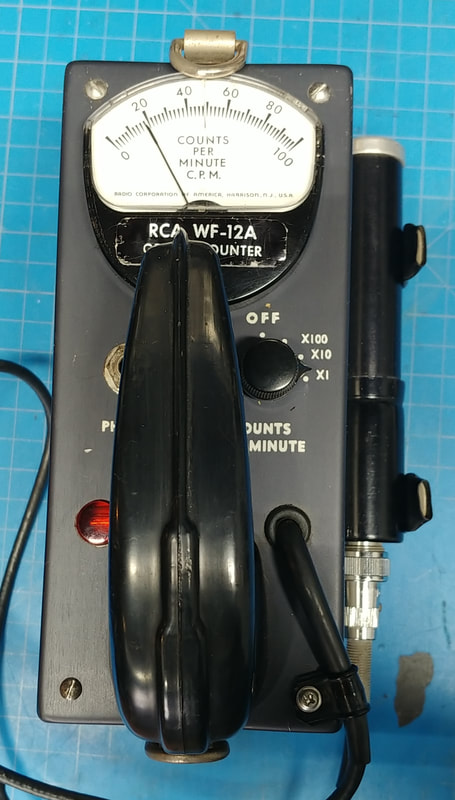RCA WF-12A Geiger Counter
This RCA geiger counter is a prospecting and survey instrument from the 1950's and provides three indicators for detecting radiation; a meter that reads counts per minute (CPM), a flashing neon lamp on the front panel, and audio output to a set of headphones.
When calibrated the meter's sensitivity is 2000 CPM = 1 mR/Hr. The meter scale is 0 - 100, and the instrument has three ranges, X1, X10 and X100. On X1 a full scale reading of 100 CPM = 0.05mR/Hr.
When calibrated the meter's sensitivity is 2000 CPM = 1 mR/Hr. The meter scale is 0 - 100, and the instrument has three ranges, X1, X10 and X100. On X1 a full scale reading of 100 CPM = 0.05mR/Hr.
|
The counter is in decent condition, no rust to speak of and only a minor scratch or two, and there is a bit of a crack in the clear face of the meter. As found, it did not work and needed some troubleshooting. The "toilet lid" cap on the 1/4" phone jack was also broken so I removed it. It's useful in that it keeps dirt and moisture out of the counter, but it also makes it a pain to get the headphone plug in and out, so I don't really miss it. But if I can repair the cap I'll probably reinstall it.
|
|
Inside the unit is clean, for once no dead, leaky batteries to deal with. Battery-wise, it uses three 1.5V "D" cells to power the filaments of the three 1U5 tubes, and two 67.5V "B" batteries that provide the 135VDC B+ for the tubes.
The biggest downside to restoring equipment like this is the "B" batteries, it's just not cost effective to buy the batteries anymore. They cost more than the instrument itself. So in this counter I'm doing away with them. |
|
I only needed to replace a few parts to get the counter working again. To start I replaced the old 500uF electrolytic capacitor in the meter circuit, and the selenium high voltage rectifier, which was open. It was replaced with a 3000PIV silicon diode. Also several out of tolerance resistors were replaced.
One issue I had working on this counter was the placement of the inductor leads for the high voltage oscillator. If the leads are not kept clear of the circuitry as much as possible it will cause the counter to run away clicking, and can quickly peg the meter and possibly even damage it. |
|
This is the DC-DC boost converter I'm using to replace those expensive 67.5V "B" batteries. I'm setting it up to convert 12VDC to 135VDC for the B+. The model number is YH11068A and can take a 10 to 32VDC input and boost it to +/- 45 to 390VDC. (There is also a version with the same model number that only has a single +45 to 390v output). The higher the output voltage the higher the duty cycle and current draw from the batteries.
To replace these batteries I adjusted the module for +/- 67.5V to the module common (marked as GND), and since it's providing a positve and negative output, the negative out is actually used as the ground to the counter. This provides +135VDC with the caveat that the module's common is not used and is kept isolated from the metal chassis so as not to short out the negative output. |
So far the counter is working very well with this high voltage boost module. I'm running the module from a power supply while testing, but as soon as the battery pack arrives in the mail I'll check the run time on batteries. I'm already sure there won't be any more expensive "B" batteries needed for this geiger counter.
|
This is the 12V 2000mAh NiMH battery pack. I have been using it for several days testing the counter and it's hardly dropped the battery voltage at all. The power supply's ammeter I was using for testing shows the module draws ~40ma, so I can already see the battery is going to last a good while on a single charge.
|
A cardboard sleeve was added around the battery so it wouldn't knock about in the compartment, and it's connected using Anderson power pole connectors. The section of the range switch that powered the 135V "B" battery on and off was rewired to switch the 12V battery instead.
Page created 4/22/2021
Last update 4/30/2021
Last update 4/30/2021

